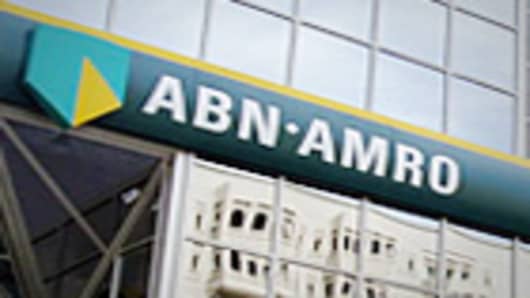The promise of unlimited bond buying by the European Central Bank and a major rally in bank stocks and bonds weren't enough to stave off a crisis for Italian bank Monte dei Paschi di Siena and the Dutch lender SNS Reaal in recent weeks. The two banks have one thing in common with the UK's Royal Bank of Scotland and Belgium's Fortis. They all bought a part of the Dutch bank ABN AMRO in 2007 and suffered from the capital strain and losses caused by that acquisition.
The costly acquisition of ABN's Italian subsidiary – Antonveneta –undermined the capital strength of Monte dei Paschi so much, that the Tuscan bank is currently being investigated for alleged wrongdoing relating to financing that takeover.
"ABN AMRO massively overbid for Antonveneta," Chris Wheeler, bank analyst at Mediobanca told CNBC. "They were just expanding everywhere insanely. … It was a reckless deal."
During the takeover of ABN AMRO in 2007, Santander carved out Antonveneta for itself, and did magic with it. Within days of acquiring ABN's Italian subsidiary for about 5.6 billion euros, Santander managed to sell it to Monte dei Paschi for 9 billion euros.
Last month, the Tuscan bank asked for a 3.9 billion euro state bailout, but the aid raised concerns, given that it's similar in size to Santander's profit on the re-sale.
Siena prosecutors have widened their probe to loss-making derivative contracts.
They accused Monte de Paschi's former management of obstructing the regulator in its oversight functions and said the bank exhibited (communicated) material facts not corresponding to the truth … on the capital position of the bank.
To win approval for the Antonveneta takeover, Monte dei Paschi needed to show the Bank of Italy that it had sufficient equity capital.
The 1 billion euro funding instruments in question are notes underwritten and sold to investors by JPMorgan. Monte dei Paschi counted those intstruments as capital when calculating its Tier 1 capital ratio. However, it's alleged, the lender misled the Bank of Italy over the true nature of the financing it raised because the notes were bonds rather than hybrid equity instruments.
The $98.5 billion takeover of ABN proved to be a disastrously mis-timed acquisition, defining the M&A peak of the credit bubble in 2007.The consortium – of RBS, Fortis and Santander – won the bidding war against Barclays, but conquering the Dutch bank turned out to be no triumph at all.
The lenders split the bank's assets among themselves.
Shortly after, Royal Bank of Scotland and Fortis were laid low by the burden of financing their parts of the takeover. They needed extra funding just as the wholesale credit market was drying up. In 2008, both banks had to be bailed out by the British and Dutch governments respectively.
Assets from the ABN AMRO legacy also paralyzed SNS Reaal,the fourth-biggest bank in the Netherlands. It bought ABN's property finance business, and suffered heavy losses on those real estate loans, particularly in Spain. After a 2008 bailout, the Dutch government eventually nationalized the bank last Friday.
Santander made the best out of the deal. Its biggest win was BancoReal, ABN's Brazilian subsidiary, which made the Spanish lender the third largest bank in the fast-growing BRICs country, and helped pull it through the crisis in the western world.


